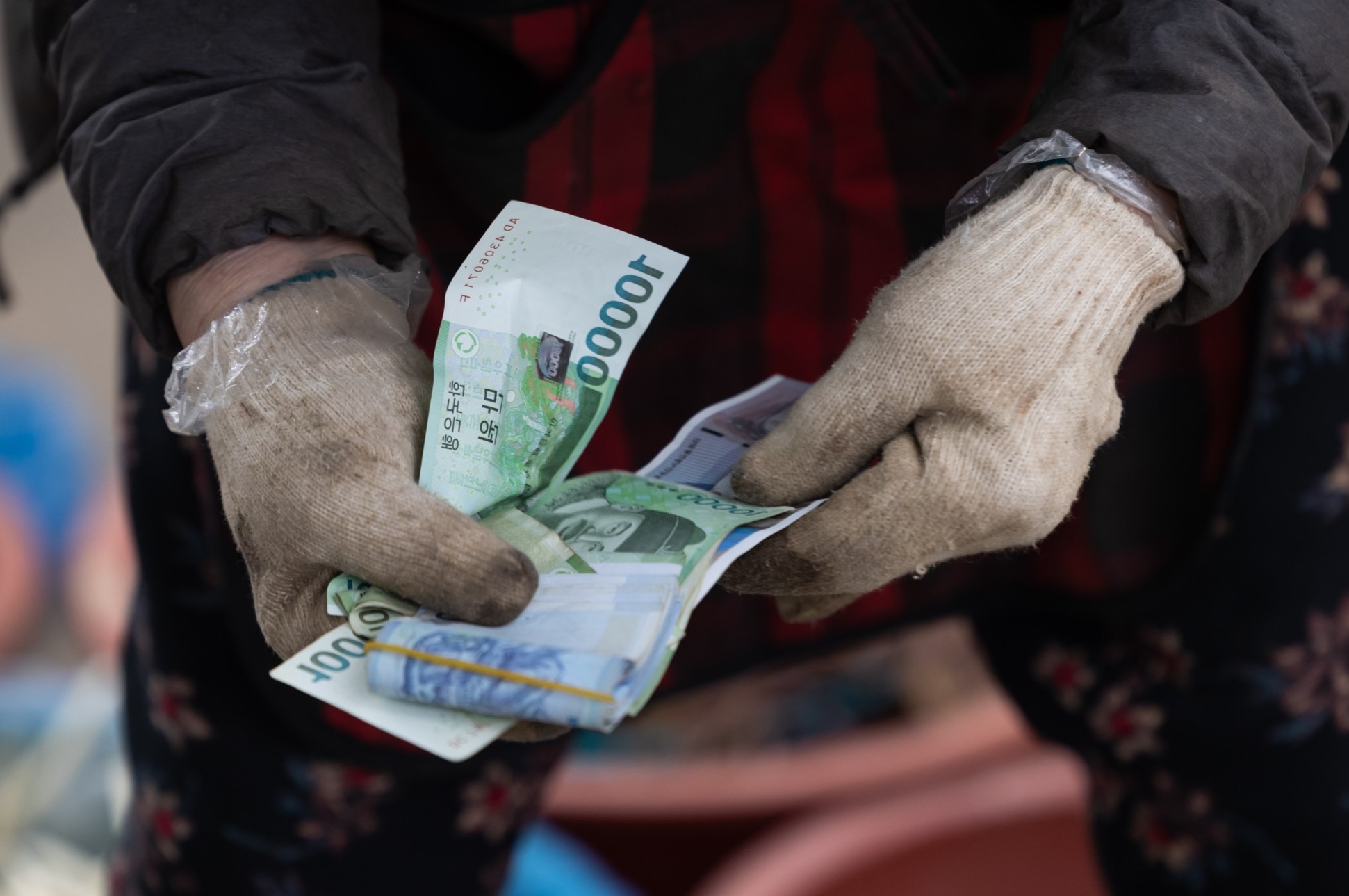
The Korean won (KRW), South Korea's official currency, carries a rich history and cultural significance. Introduced in 1902, it has undergone several transformations, reflecting the nation's economic and political changes. The won is symbolized by ₩ and subdivided into 100 jeon, though jeon is rarely used today. Coins and banknotes feature historical figures and cultural symbols, such as Admiral Yi Sun-sin and King Sejong the Great. The Bank of Korea oversees the currency, ensuring its stability and growth. Understanding the won offers insights into South Korea's heritage and economic landscape, making it essential for both locals and visitors.
Introduction to the Korean Won
The Korean won, abbreviated as KRW, is the official currency of South Korea. It has a rich history and cultural significance that reflects the country's journey through time. Let's explore some fascinating facts about this currency.
-
The Korean won is the currency of South Korea, officially known as the Republic of Korea. It is divided into 100 jeon, although the jeon is no longer used in everyday transactions.
-
The symbol for the Korean won is ₩, and its foreign exchange market designation is KRW. This symbol is widely recognized and used in financial transactions.
Historical Background
The Korean won has undergone several transformations, influenced by historical events and economic changes.
-
The modern version of the Korean won dates back to 1902. It was introduced as the Korean won, replacing other currencies like the Mun and Yang.
-
From 1910 to 1945, Korea was under Japanese control. During this period, the Korean won was replaced with the Korean yen, tied to the Japanese yen.
-
After Japan's surrender at the end of World War II, Korea was divided into North and South. Each territory introduced its own currency, both called the won, replacing the existing yen.
-
The South Korean won was initially pegged to the US dollar at an exchange rate of 15 KRW = 1 USD. This peg was meant to stabilize the currency post-war.
-
The Korean War led to severe devaluations of the won. By April 1951, the exchange rate with the US dollar was as high as 6000 KRW.
-
In 1953, the South Korean won was replaced by the hwan at a rate of 1 hwan = 100 won. This change was part of an effort to stabilize the economy.
-
On June 9, 1962, the won was reintroduced with an exchange rate of 10 hwan = 1 KRW. By March 22, 1975, it became the only legal currency in South Korea, with an exchange rate of 125 won = 1 USD.
-
On December 24, 1997, an agreement was signed with the International Monetary Fund to allow the free fluctuation of the won in the market. This led to a significant devaluation during the Asian financial crisis.
The Role of the Bank of Korea
The Bank of Korea plays a crucial role in managing the currency and ensuring economic stability.
-
The Bank of Korea, headquartered in Seoul, is responsible for coining the coins and issuing the banknotes. It oversees the minting and printing of South Korean currency by the Korea Minting and Security Printing Corporation.
-
Currently, coins in circulation include 1, 5, 10, 50, 100, and 500 won. These coins are used for various everyday transactions.
-
Banknotes are available in denominations of 1,000, 5,000, 10,000, and 50,000 won. Each denomination features unique designs and historical figures.
Design Elements and Cultural Significance
The design elements of Korean currency reflect the country's rich cultural heritage and historical significance.
-
The ₩50 coin features a stalk of rice, representing Korea's favorite food. This design element highlights the country's agricultural heritage.
-
The ₩100 coin features an image of Admiral Yi Sun-sin, a celebrated navy admiral and national hero in Korea. He is known for his victories against the Japanese navy during the Imjin War.
-
The ₩500 coin features a Red-Crowned Crane, which represents peace and longevity. This design symbolizes the country's hope for prosperous development.
-
Shin Saimdang, a Korean artist, writer, calligraphist, and poet, is the first woman to appear on a South Korean banknote. She is depicted on the ₩50,000 bill and is known for her wide range of talents.
-
King Sejong the Great is featured on the ₩10,000 bill. He is credited with creating and promulgating the Korean alphabet, Hangul, and encouraging advancements in scientific technology.
-
Yulgok Yi I, a Korean Confucian scholar, is depicted on the ₩5,000 bill. He was instrumental in establishing Dosan Seowon, a Confucian academy in Andong, South Korea.
-
The ₩5,000 bill also features an illustration of an armillary sphere. This astronomical model represents lines of celestial longitude and latitude, built under the order of King Sejong the Great.
Economic Significance
The Korean won plays a vital role in South Korea's economy, reflecting its stability and growth.
-
The South Korean economy has been stable and growing since the latter half of the 20th century. This stability has contributed to the won's performance in the global currency market.
-
South Korea is a developed, high-income country and a member of the OECD. It is one of the world's largest automobile producers and shipbuilders, with many large construction companies.
-
From the 1960s to the 1990s, South Korea had one of the fastest-growing economies in the world. It remains one of the fastest-growing developed countries in the 2020s, alongside Hong Kong, Singapore, and Taiwan.
-
The Korean won is the only legal tender in South Korea. The exchange rate between the US dollar and the Korean won has fluctuated over time. As of July 2022, one US dollar was worth approximately 1,319 Korean won.
-
Supply and demand, economic stability, and other factors cause the value of currency and exchange rates to change daily. It is essential to check current exchange rates for optimal financial transactions.
Practical Usage
Understanding the practical aspects of using the Korean won can be helpful for both locals and tourists.
-
When traveling to South Korea, you can withdraw local currency directly from ATMs or exchange your funds at a bank. Exchange counters at airports also offer this service.
-
Companies like Remitly provide convenient services for transferring money to Korea. You can log into their app and select Korea as your destination to see current exchange rates for USD to KRW, GBP to KRW, and more.
-
Banknotes in South Korea feature famous historical figures from the Yi dynasty. These include King Sejong the Great, who created the Korean alphabet Hangul, and Yulgok Yi I, a prominent Confucian scholar.
-
The illustrations on the back side of banknotes are often depicted vertically, unlike most horizontal pictures. These include paintings from the Joseon dynasty, such as ‘Wolmaedo’ and ‘Pungjugdo’.
-
The ₩50 coin features a stalk of rice, which is Korea's favorite food. This design element reflects the country's agricultural heritage and cultural significance of rice.
-
Admiral Yi Sun-sin is celebrated for his naval victories during the Imjin War. His image on the ₩100 coin symbolizes bravery and strategic leadership.
-
The ₩500 coin depicts a Red-Crowned Crane, which represents peace and longevity in Korean culture. This design aims to promote harmony and stability.
-
The Korean won's design elements, such as historical figures and cultural symbols, provide educational value. They promote national pride and cultural awareness.
-
The Korean won is widely used in everyday transactions, from small purchases to large financial dealings. Its decimalized system makes it convenient for everyday use.
-
Although the jeon is no longer used in everyday transactions, it is still a subunit of the won. This division helps in precise financial calculations.
-
Banknotes in South Korea come in denominations of 1,000, 5,000, 10,000, and 50,000 won. Each denomination features unique designs and historical figures.
-
Coins in circulation include 1, 5, 10, 50, 100, and 500 won. Each coin has its own design element, such as the stalk of rice on the ₩50 coin.
The Bank of Korea’s Role
The Bank of Korea ensures the stability and growth of the Korean won through various measures.
-
The Bank of Korea plays a crucial role in managing the currency, ensuring its stability, and maintaining economic growth. It oversees the minting and printing of coins and banknotes.
-
The Korea Minting and Security Printing Corporation is responsible for printing important government documents. It manages the security features of South Korean currency.
-
Both North and South Korea refer to their currency as the won, but they use different symbols and exchange rates. The North Korean won is designated as KPW, while the South Korean won is KRW.
Historical Context and Economic Impact
The Korean won's history and economic impact are significant, reflecting the country's journey through time.
-
The Korean won has undergone significant transformations since its introduction in 1902. It has been replaced temporarily by the hwan and reintroduced multiple times, reflecting the country's political and economic changes.
-
The value of the Korean won is influenced by various economic factors, including supply and demand, economic stability, and global market conditions. This makes it essential to monitor exchange rates regularly.
Tourism and Travel
For tourists visiting South Korea, understanding the Korean won is crucial for a smooth experience.
-
For tourists visiting South Korea, understanding the Korean won is crucial. They can exchange their foreign currency at banks, airports, or use ATMs to withdraw local currency.
-
Services like Remitly make it easy to transfer money to Korea. Users can log into the app to see current exchange rates and transfer funds conveniently.
-
Rice is a staple food in Korean culture, and its depiction on the ₩50 coin symbolizes the country's agricultural heritage and cultural significance. This design element highlights the importance of rice in Korean society.
-
Admiral Yi Sun-sin's naval achievements during the Imjin War are celebrated in Korean history. His image on the ₩100 coin reflects his strategic leadership and bravery.
-
The Red-Crowned Crane on the ₩500 coin represents peace and longevity in Korean culture. This design aims to promote harmony and stability within the country.
-
Banknotes in South Korea feature historical figures and cultural symbols, providing educational value. They promote national pride and cultural awareness.
-
The Korean won uses a decimalized system, making it convenient for everyday transactions. This system ensures precise financial calculations and easy conversion between different denominations.
-
The Bank of Korea has the exclusive authority to issue banknotes and coins for South Korea. It plays a crucial role in maintaining the stability of the currency and ensuring economic growth.
The Essence of Korean Won
The Korean won is more than just a currency; it's a reflection of South Korea's rich history and cultural heritage. From its early days in 1902 to its modern form, the won has seen significant changes, including periods of devaluation and reintroduction. Coins and banknotes feature historical figures like King Sejong the Great and Admiral Yi Sun-sin, along with cultural symbols such as the Red-Crowned Crane and rice stalks. Managed by the Bank of Korea, the won plays a crucial role in the nation's economic stability. Whether you're a tourist or a local, understanding the won helps you appreciate South Korea's journey and its aspirations for peace and prosperity. So next time you handle a ₩50,000 bill or a ₩500 coin, remember the stories and values they represent.
Was this page helpful?
Our commitment to delivering trustworthy and engaging content is at the heart of what we do. Each fact on our site is contributed by real users like you, bringing a wealth of diverse insights and information. To ensure the highest standards of accuracy and reliability, our dedicated editors meticulously review each submission. This process guarantees that the facts we share are not only fascinating but also credible. Trust in our commitment to quality and authenticity as you explore and learn with us.


